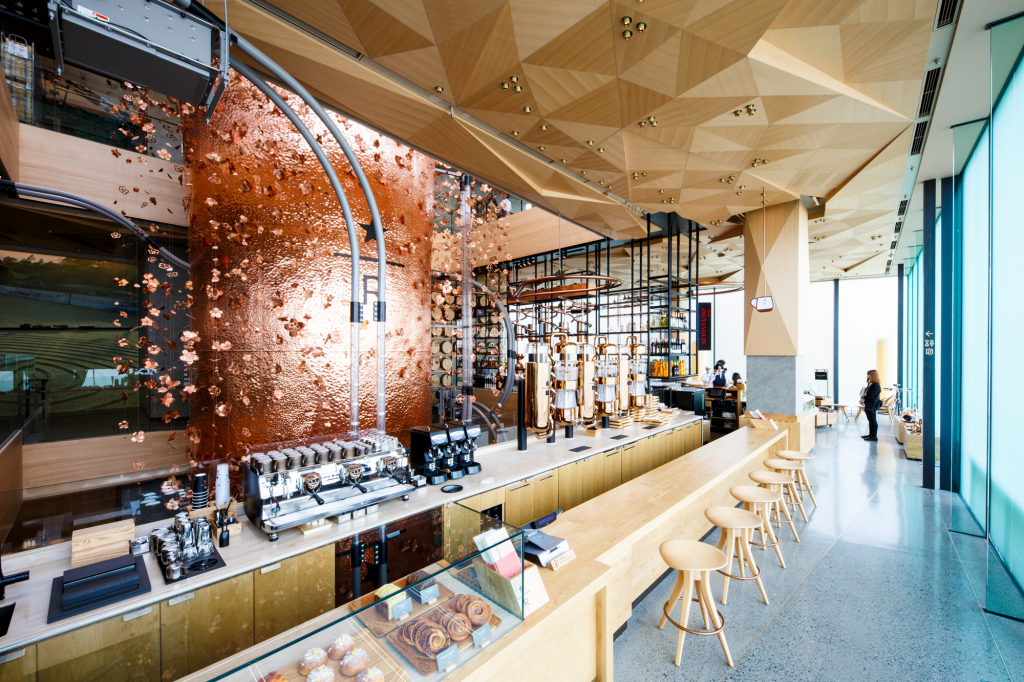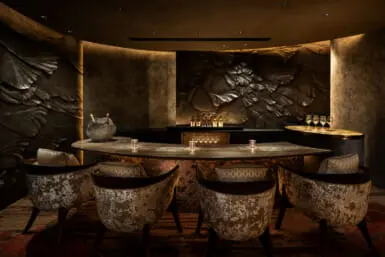Starbucks opened doors to its most grande café in Nakameguro. The fifth Reserve Roastery, designed by architect Kengo Kuma, is the biggest of Starbucks’ five roasteries, surpassing Seattle, Shanghai, Milan and New York.
It’s also the biggest Starbucks coffee shop in the world to date. Offering not only your basic espresso but also tea on tap and a fully stocked bar. This exclusive Starbucks experience manages to incorporate contemporary Japanese design in every corner, delicious Italian pastries and creative mixology.
Built on premier real estate on the Meguro River, and only a 10-minute walk from Nakameguro station, the roastery spans across four floors, each with its own distinct feel and vibe. The first floor offers both drip and brewed coffee. Watch as the beans are prepared and sent from one side of the factory to the other through tubes, which allows you to see the work in progress while sipping your cup of joe. The most impressive piece of equipment and decor is the massive copper cask in which the beans of the Japan-exclusive Tokyo roast are prepared, adding texture to contrast with the sleek wooden furniture and matte black appliances. All those little dents are the result of the hard work of Japanese craftsmen.
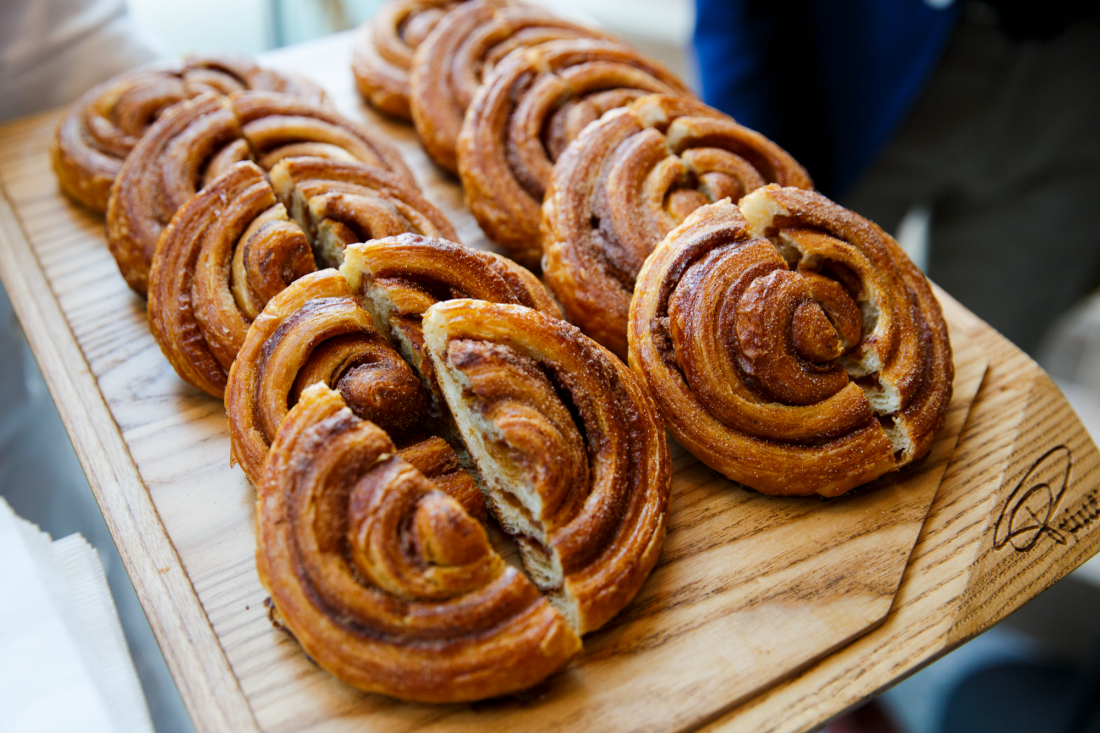
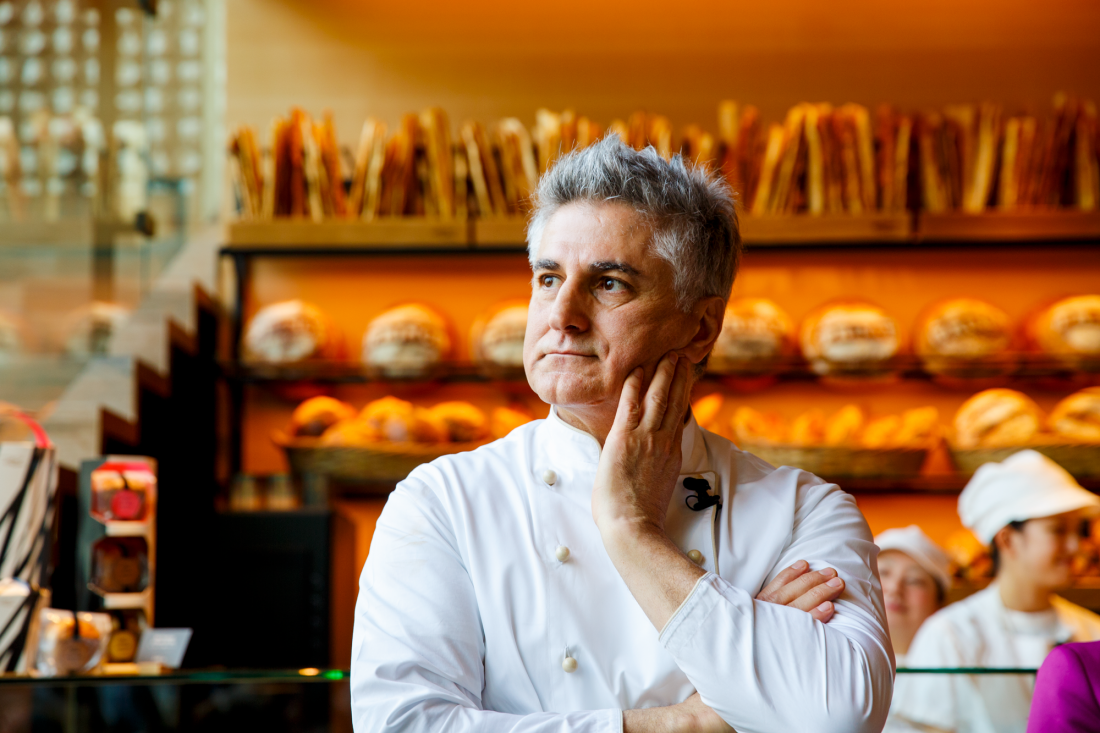
The first floor is also where customers can order baked goods. For their Starbucks roasteries, the company partnered with internationally renowned Italian baker Ricco Princi. To keep the Italian essence across his buttery creations, Princi visited Tokyo a couple of times last year to teach local bakers his recipes and techniques. With the exception of the delicious pizza, which is made in-house, the cinnamon rolls and croissants are made in a bakery only 15 minutes away.
The second floor is home to the Teavana bar, where customers can order their favorite tea, and baristas pour them straight from the tap. While all the other materials used in the construction of the roastery were sourced on Japanese soil, the Teavana bar was entirely 3D-printed. But the star of the second floor and the real selling point of this place (if it really needed one) is the terrace. Overlooking the Meguro river, customers will be able to experience the cherry blossom season up-close-and-personal at eye level.
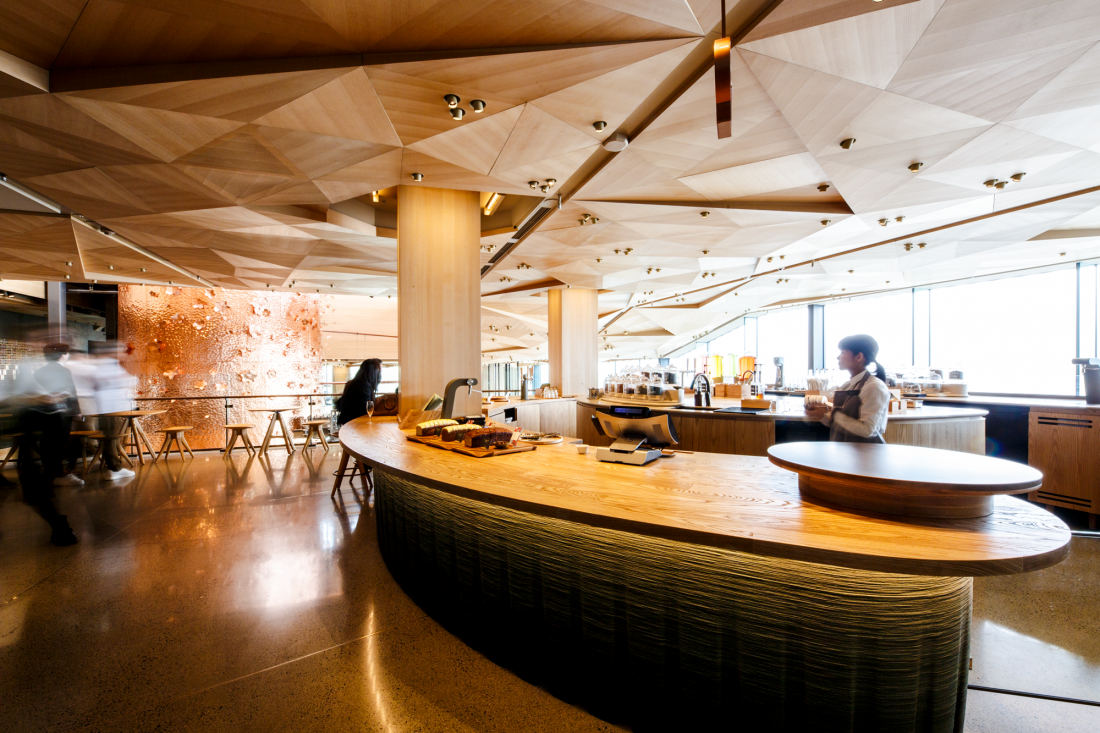
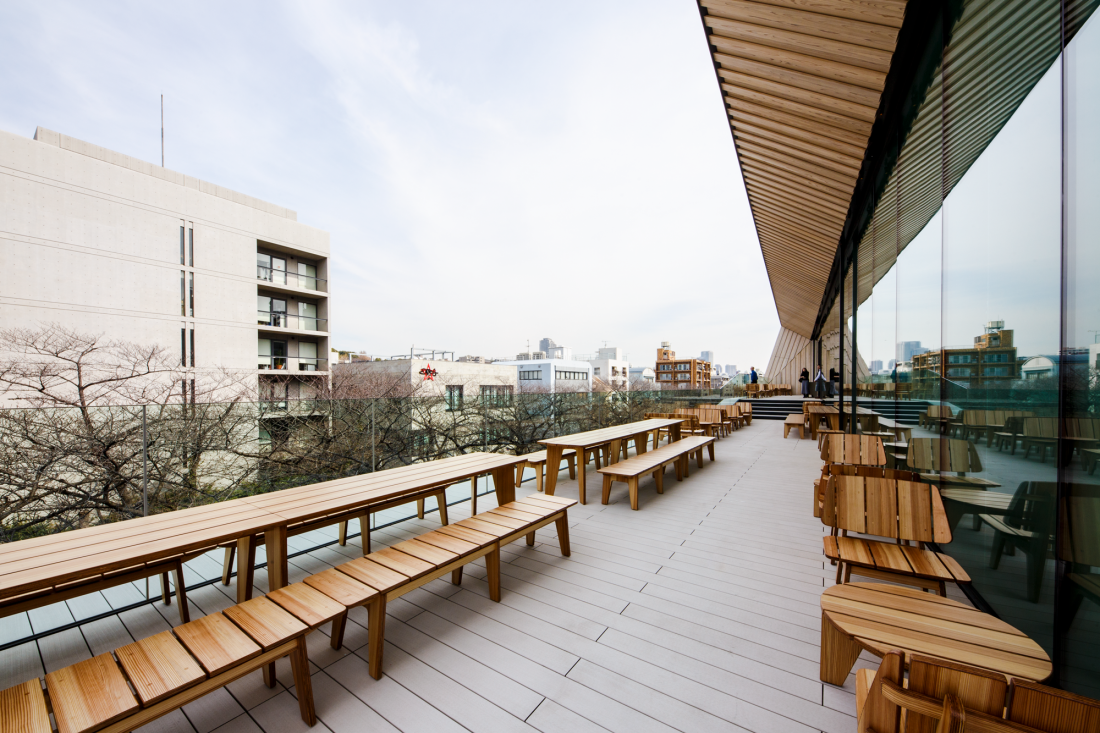
The third floor is a proper bar, with special cocktails and creative mixology techniques. For ¥3,000, taste a filtered Japanese whisky, seasoned with a dash of shoyu. Finally, the last floor will be closed to the general public but can be rented as an event space. With a view on how they package the Japan-exclusive Tokyo roast, those who are interested can also sign up for barista workshop classes with a complete kitchen available for use.
The eclectic design, from the facade of the building to the ceiling, are the result of a collaboration between Japanese craftsmen, Japanese architect Kengo Kuma and Starbucks’ in-house designer Liz Muller, who created a fantastic hybrid of modernity and tradition. The materials, the techniques, and of course the furniture and decoration were inspired by Japanese culture and design. The only touch of the coffee giant is the use of copper and the sleek industrial feel.
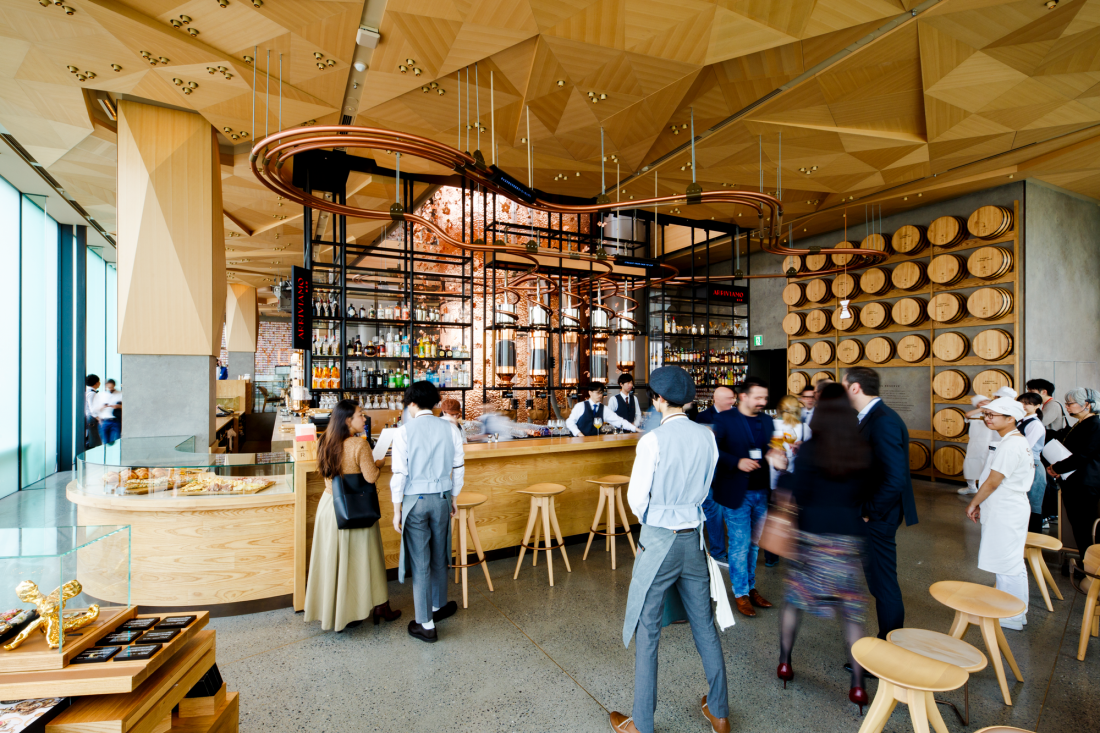
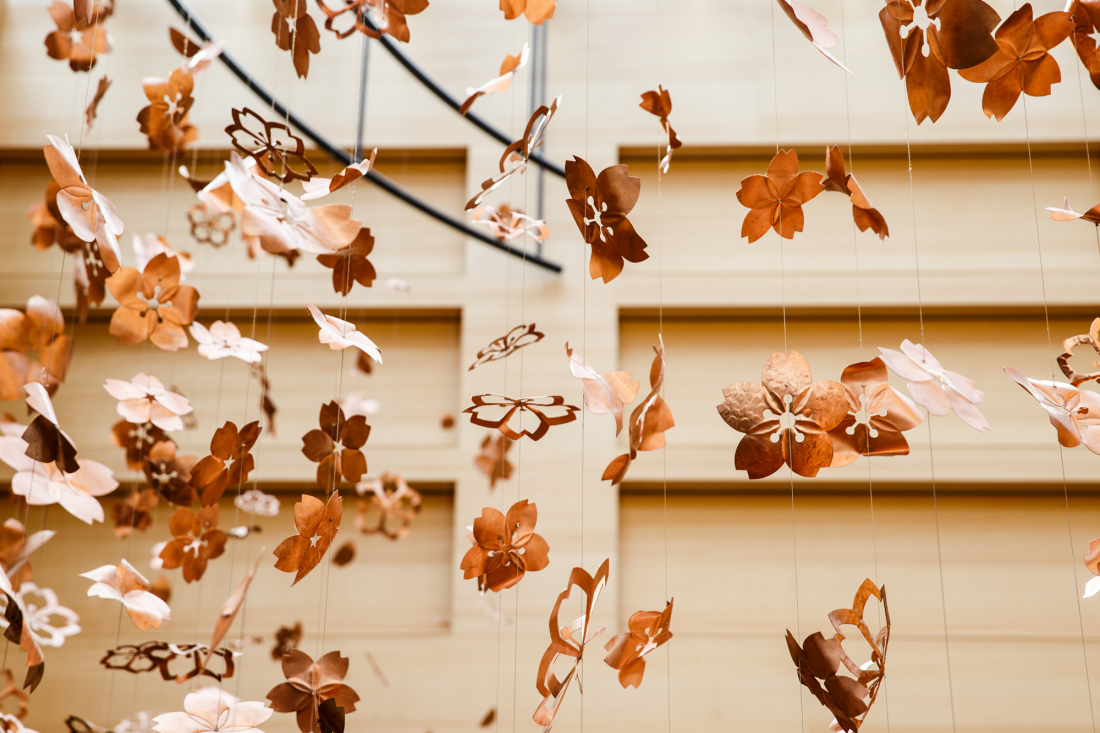
And what is more Japanese than its national emblem the cherry blossom. Sculpted in thin copper sheets, and hung from the ceiling, the whiskey barrel is decorated with falling petals for a delicate touch. Another design element inspired by the Japanese arts is the ceiling. Meant to mimic the folded paper in origami, it is not only beautiful to look at but under every plank, are speakers. Yes, the ceilings of the roastery are covered in speakers.
Though we can expect it to be crowded to the brim for the next couple of months, if you don’t mind waiting in line, it’s definitely worth a visit, if only to have a simple cup of black coffee.
For address and contact details, see our Concierge listing.
Photographs by Keisuke Tanigawa

